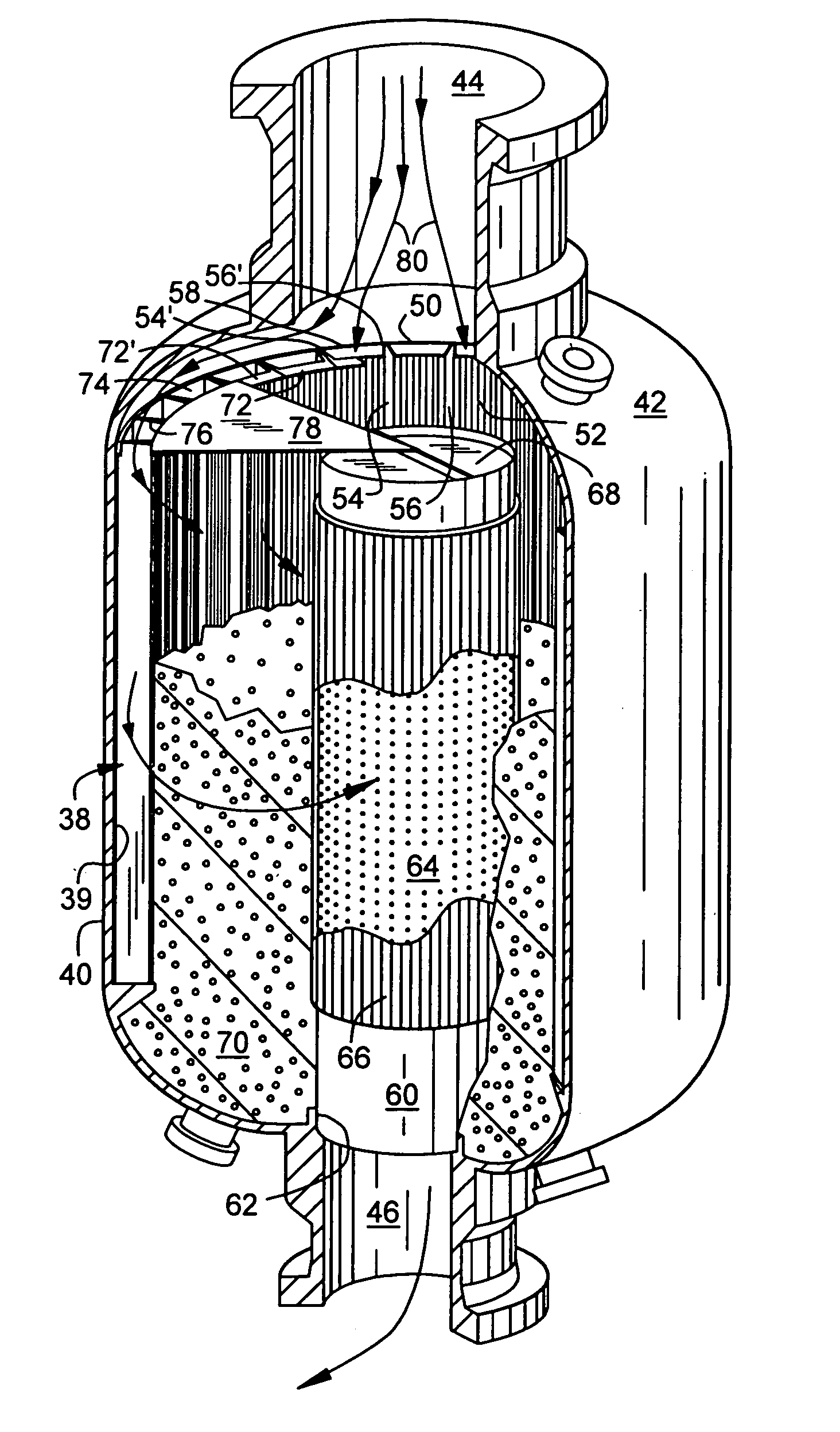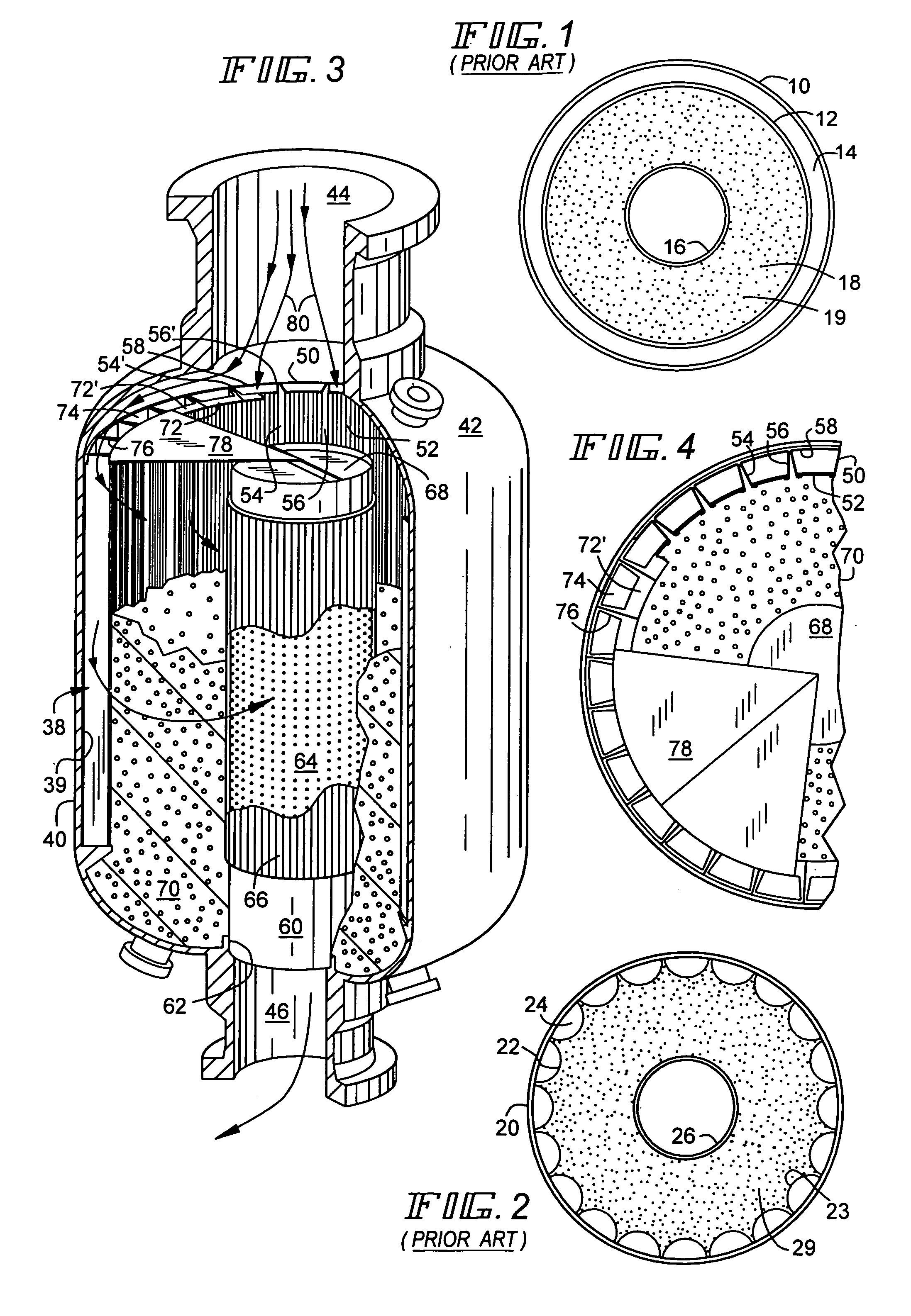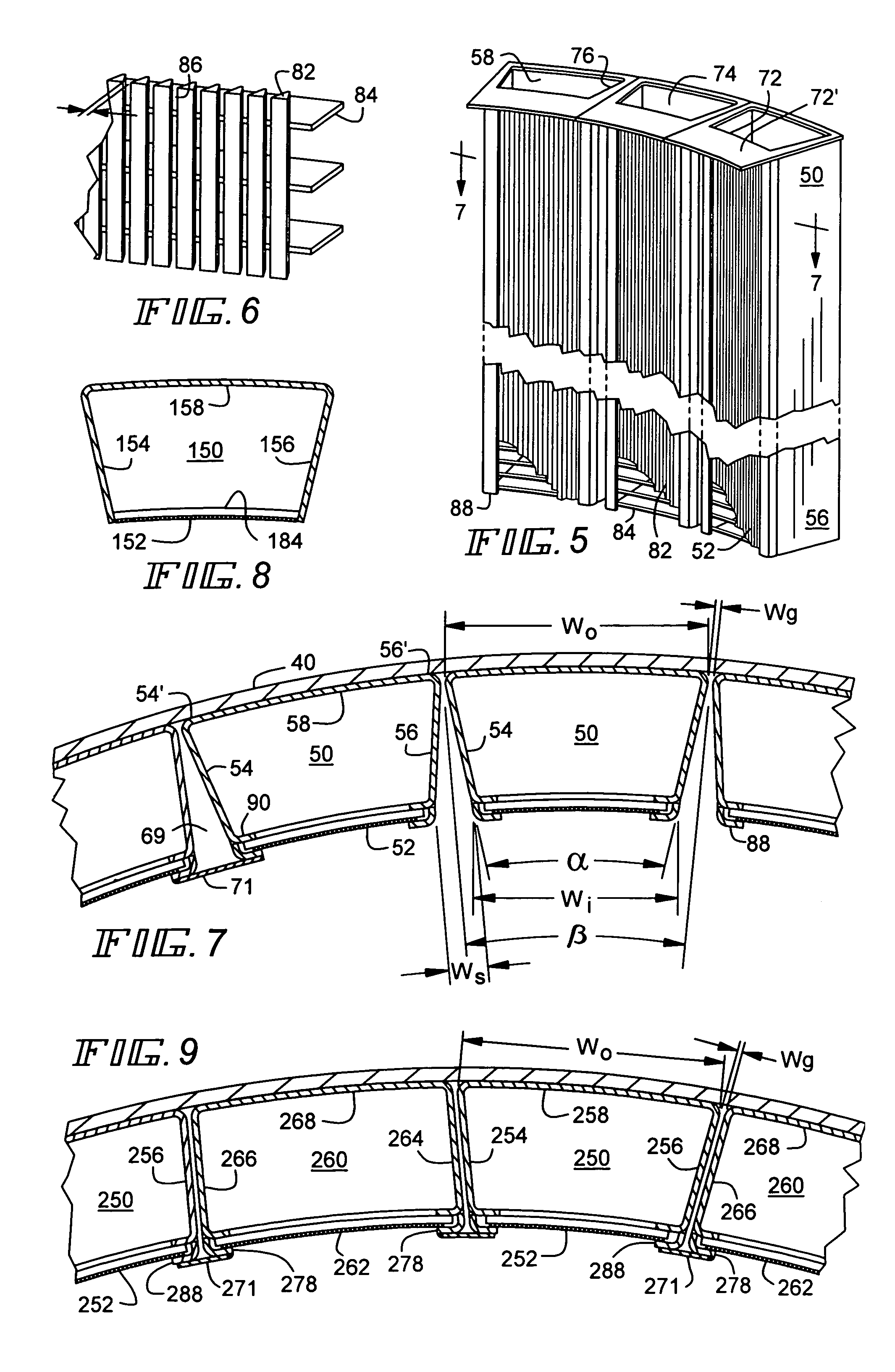Plural conduit replaceable outer support structure for radial flow system
a technology of radial flow and conduit, which is applied in the direction of separation process, physical/chemical process catalyst, dispersed particle separation, etc., can solve the problems of non-uniform thickness of annular bed, high cost of additional materials, and inconvenient installation, etc., to achieve uniform bed thickness, easy removal, and simple installation
- Summary
- Abstract
- Description
- Claims
- Application Information
AI Technical Summary
Benefits of technology
Problems solved by technology
Method used
Image
Examples
Embodiment Construction
[0018]FIG. 1 is a cross-sectional view similar to FIG. 2 and FIG. 4 which illustrates one type of construction used for a prior art radial flow reactor vessel (not shown). A vertical, generally cylindrical outer wall member 10 cooperates with a cylindrical outer screen basket member 12 to define an outer annular opening 14. The screen basket member 12 is concentrically located relative to a center mounted vertical screen pipe 16 to define the outer and inner walls of an inner annulus area 18 which is packed with an annular bed of particulate material 19 such as a catalyst. In normal use, the fluid to be processed enters an inlet opening (not shown) at the top of the vessel and passes into the outer annular opening 14. The fluid then passes radially inwardly through openings (not shown) in the screen basket 12, through the annular bed of particulate material 19, through openings (not shown) formed in the center mounted screen pipe 16 and then moves downwardly through the screen pipe ...
PUM
| Property | Measurement | Unit |
|---|---|---|
| diameter | aaaaa | aaaaa |
| diameter | aaaaa | aaaaa |
| diameter | aaaaa | aaaaa |
Abstract
Description
Claims
Application Information
 Login to View More
Login to View More - R&D
- Intellectual Property
- Life Sciences
- Materials
- Tech Scout
- Unparalleled Data Quality
- Higher Quality Content
- 60% Fewer Hallucinations
Browse by: Latest US Patents, China's latest patents, Technical Efficacy Thesaurus, Application Domain, Technology Topic, Popular Technical Reports.
© 2025 PatSnap. All rights reserved.Legal|Privacy policy|Modern Slavery Act Transparency Statement|Sitemap|About US| Contact US: help@patsnap.com



